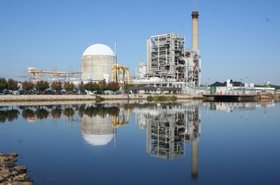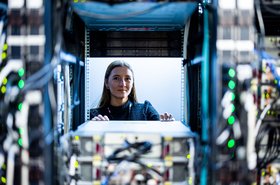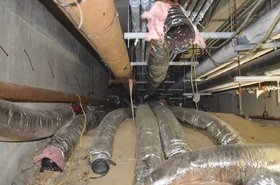A Norwegian power company plans to build small modular nuclear reactors (SMRs) for data centers to help ease the pressure on the country’s power network.
Norsk Kjernekraft says it will develop the reactors to provide off-grid power near data centers and other industrial customers that require “reliable power”. It says the waste heat generated by the devices can also be harnessed for manufacturing processes and district heating systems.
Nuclear power is often touted as an environmentally-friendly way to meet the rapidly growing energy needs of the data center sector. SMRs promise to be cheaper and easier to build than full nuclear power plants, and companies like Norsk Kjernekraft believe they can be deployed on-site at data centers and offer dedicated power for individual facilities or regions.
The energy firm said forecasts for the amount of additional power production required in Norway in the coming years “vary from 50TWh to 233TWh.” In 2023 the country’s power plants produced 156TWh in total, according to the Norwegian Ministry of Energy.
Norway’s grid currently runs entirely renewable energy sources, mainly provided by hydro power, which accounts for 88 percent of the country’s supply, and some wind energy. This, together with its cool climate, has made it an attractive market for data center operators.
There are currently no nuclear reactors in Norway, but Norsk Kjernekraft argues that additional sources of power must be found.
“The searchlight must be focused on how much power Norway can produce in a sustainable manner,” the company said.
“If we are only going to have renewable power production, then production is limited by how much area we are willing to put into use and how stable electricity can be delivered.
“When Norway reaches the "ceiling" on power production, for example due to a lack of access to land, economic growth will naturally stagnate.”
Norsk Kjernekraft said installing SMRs at data centers would free up grid capacity currently used by digital infrastructure. The heat produced by the reactors could “be used for heat-intensive industries,” the company statement said.
“It can be for the production of steel and aluminum, but also for carbon capture, as well as the production of hydrogen, ammonia, and e-fuels,” it added. “The residual heat can be used for district heating. All this reduces the need for electricity, and thereby also the need for grid development.”
Norsk Kjernekraft has not gone into detail of the amount of power SMRs would generate, or whether the idea has garnered any interest from Norway’s data center operators.
The company is also proposing to build a nuclear plant made up of five SMRs in the Øygarden municipality, west of the city of Bergen. It has signed a deal with Rolls Royce, which will supply the reactors for the site. Rolls Royce has previously pitched its SMRs directly to data center operators. Feasibility studies are currently being carried out, and the company believes the plant could be up and running in ten years.
Nuclear power is being explored by some of the world’s biggest data center operators. In March, Amazon paid $650 million for a 960MW data center in Talen, Pennsylvania, which is powered by an adjacent nuclear energy facility.
Microsoft has also been building a team to investigate the possibility of using SMRs at its data centers.







